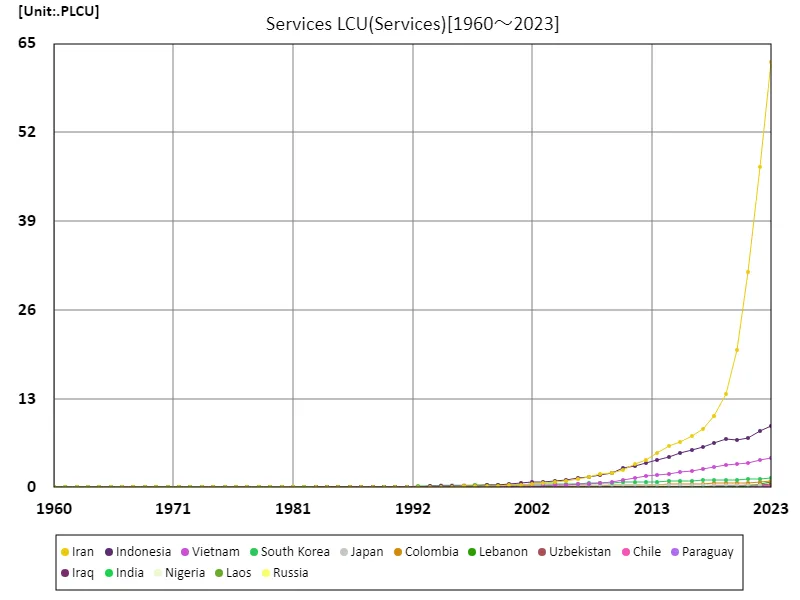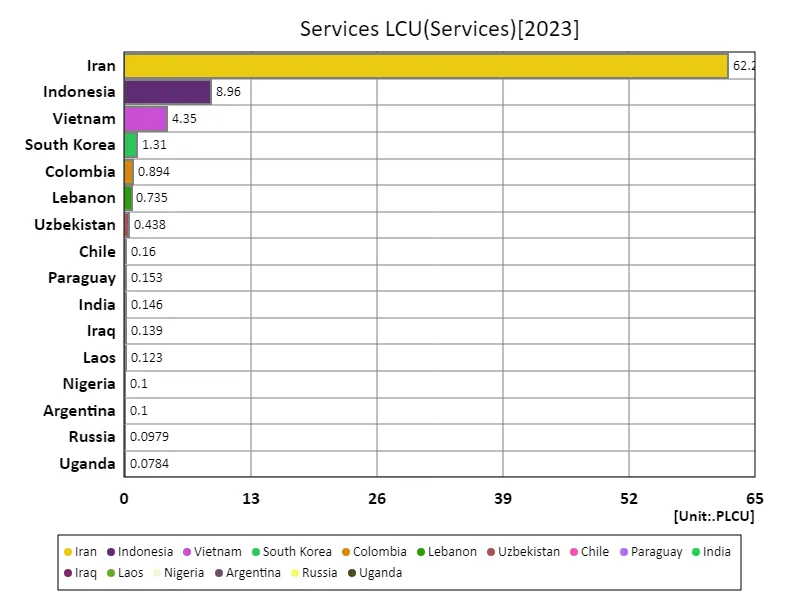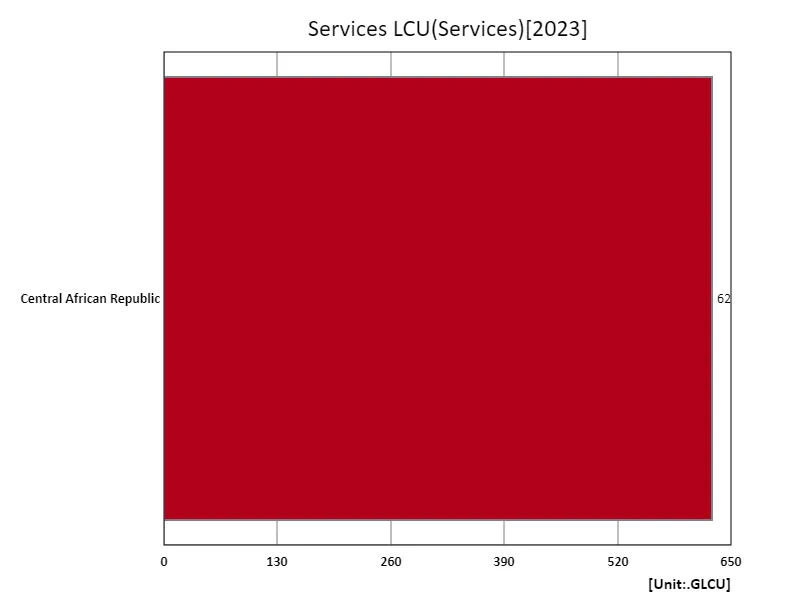Abstract
According to data for 2023, the value added in Iran’s service industry was 62.2 plcu (local currency units), a very high figure compared to other countries. This high added value signals a change in Iran’s economic structure. Over the past few decades, Iran has transitioned from an economy dependent on oil and natural gas to one in which the service sector is increasingly important. In particular, sectors such as tourism, financial services and education are growing, which is contributing to increased added value. The growth of Iran’s services industry also reflects the fact that it has been supported by expanding domestic demand and innovation, despite economic sanctions and constraints on international investment. The high added value of the service industry indicates that the economy is becoming more diversified and is changing to a more flexible economic structure that is not dependent on a single resource. This could enable Iran to aim for more sustainable and stable economic growth in the future.
Services, local currency
According to data from 1960 to 2023, Iran recorded the highest value of 62.2 plcu in 2023 in value added of services in agriculture, forestry and fishing. There are several important economic changes that have led Iran to reach this peak, with 100% value added. First, over the past few decades, Iran has modernized and streamlined its agriculture, forestry and fishing industries, which has contributed to a significant increase in the added value of its service sector. Government policies such as introducing new technology and improving infrastructure, as well as diversifying agriculture and strengthening management of fisheries, have proven effective. This has made it possible to produce agricultural and marine products with high added value, and the contribution of the service industry has increased. In addition, as domestic demand in Iran expanded, demand for agriculture, forestry and fisheries-related services also increased. In particular, the provision of services in areas such as distribution, processing and quality control of agricultural products has improved, which is contributing to increased added value. In addition, as the local economy is revitalized, agricultural-related employment is increasing, which is likely to contribute to the stability of the economy as a whole. Due to these factors, it can be said that Iran has achieved full value added in the service industry in the agricultural, forestry and fisheries sectors compared to its previous peak.


The maximum is the latest one, 62.2PLCU of Iran
Service industry, local currency (worldwide)
According to the data from 1960 to 2023, Iran will record a peak of 62.2 plcu in value added in services in 2023, which is 100% higher than the historical value. This trend signals a major shift in Iran’s economic structure. Over the past few decades, Iran has shifted from a reliance on oil to an expanding service sector. In particular, growth has been notable in areas such as finance, tourism, education and healthcare, which are contributing to increased added value. Government policies and encouraging international investment have supported the development of these sectors. Additionally, digitalisation and technological advances are also having an impact. The development of IT infrastructure and the spread of digital services are contributing to improved efficiency and the creation of new business opportunities, thereby increasing the added value of the service industry. Against the backdrop of these changes, Iran is aiming for sustainable growth by increasing the importance of the service sector and promoting economic diversification. Overall, the peak in value added in Iran’s services sector reflects the increasing flexibility and diversity of the economy, which will strengthen the foundation for future economic growth.


The maximum is the latest one, 62.2PLCU of Iran
Services industry, local currency (world countries, latest year)
According to data for 2023, the average value added in local currency in the global services industry is 532 tlcu, and the total is 80.9 plcu. Value added in the service sector varies greatly from country to country, as can be seen from Iran’s high figure of 62.2plcu. This data shows the diversity of the service sector in the global economy. In developed countries and countries experiencing rapid economic growth, high value-added services such as finance, IT, and tourism play an important role. Meanwhile, in developing countries, service sectors such as education, health and agricultural support are at the heart of growth. Due to technological advances and the advancement of globalization, the importance of the service industry is increasing. As digitalization progresses, service efficiency and the creation of new business models are accelerating. In addition, the COVID-19 pandemic has led to increased demand for online education and teleworking. Globally, the services sector is positioned as a major driver of economic growth and a key enabler for sustainable development. Going forward, the service industry in each country will continue to evolve while adapting to technological innovation and market changes.


The maximum is 62.2PLCU of Iran, the average is 536TLCU, and the total is 80.9PLCU
Services, local currency (region, latest year)
According to data for 2023, the global agricultural, forestry and fisheries service industry value added in local currency is highest in the Central African Republic at 628 glcu. This figure is in line with the average and indicates that the agricultural, forestry and fishing service industries play a particularly important role in the country. Agriculture, forestry and fishing service sectors are becoming increasingly important in many countries. In particular, services that support the production, processing, and distribution of agricultural and marine products are growing. This is due to the adoption of technological innovation and the promotion of sustainable agriculture, which is resulting in increased productivity and economic benefits. The Central African Republic’s high value added reflects the growth and development of the regional economy. Additionally, in other developing countries, agriculture-related service industries are also contributing to job creation and the development of social infrastructure. This promotes sustainable growth across the local economy. Furthermore, growing awareness of climate change and environmental protection is impacting the outlook for agricultural, forestry and fishing service industries. There is a demand for the adoption of sustainable practices and enhanced risk management, which contributes to the growth and stability of the industry as a whole. Overall, the agricultural, forestry and fisheries service sector is growing in importance globally, and technological innovation and the promotion of sustainable development will continue to be essential for the development of the industry.


The maximum is 628GLCU of Central African Republic, the average is 628GLCU, and the total is 628GLCU



Comments